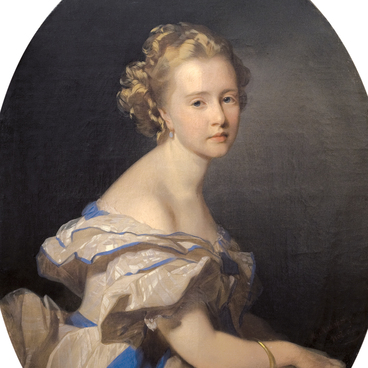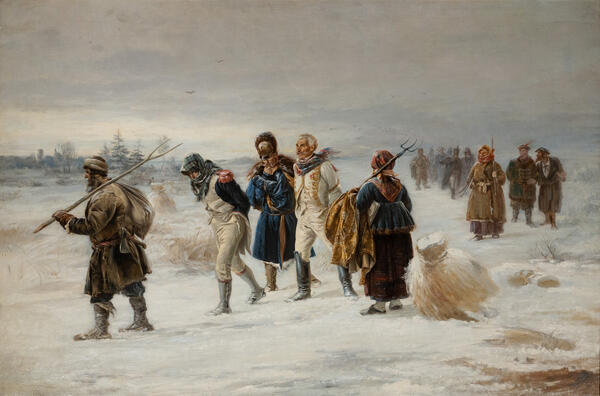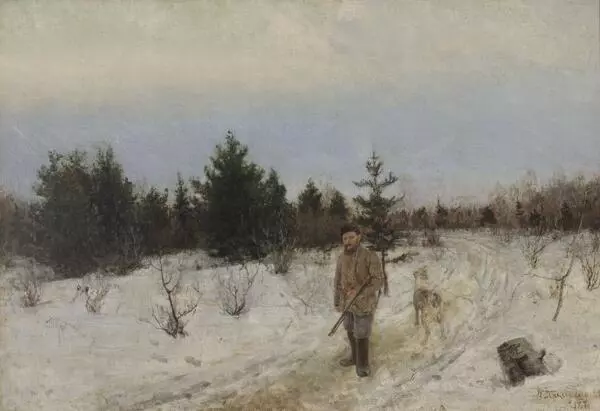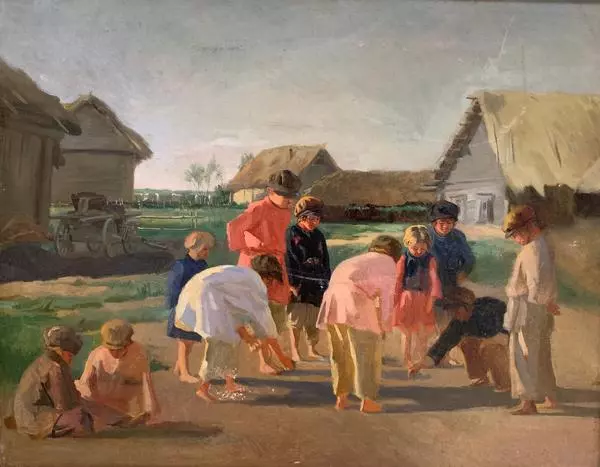IllariOn PryAnishnikov was one of the founders of the Association of Traveling Art Exhibitions: PeredvIzhniki, or the Itinerants, a group of artists who rejected the rules imposed by the Academy of Arts. His work was distinguished by civic responsibility, an attempt to solve the ‘cursed issues’ of our time, sympathy for the common people, and willingness to learn about them. All these factors determined the social tension of the artist’s paintings. Together with other Itinerants, he created a genre painting dedicated to common people for the first time in the history of Russian art.
Pryanishnikov’s ‘Fire survivors’ from the NovosibIrsk collection also took part in the first exhibition of the Itinerants. With sympathy, the artist depicts peasant children who had lost their homes. The action takes place on a gloomy autumnal day. Children froze in the space of the painting as if asking for a handout from the viewer standing in front of the painting. Every detail of the canvas—from patches on clothes and charred logs of huts to birch trees trembling in the wind and birds screaming in the gloomy sky—helps the artist to convey the spirit of hopelessness.
Thus, Pryanishnikov sought to show the dark sides of ordinary people’s life and call for a change in the unbearable situation. Such was the purpose of this particular artwork and the entire artistic strategy of the Itinerants.
The first exhibition of the Association was opened in the autumn of 1871 in Saint Petersburg, the works were subsequently exhibited in Moscow, Kyiv, and Kharkiv. All in all over twenty artists participated. It made a huge impression on the public and triggered great interest in the problems that these artists were the first to openly speak about. Moreover, this historical period was marked by an active search for a possible solution to the peasant question, since the Emancipation reform did little to improve their lives.
Many saw it as a keynote address of democratic artists. The importance of outreach and awareness-raising work and interest in the life of ordinary people aroused the sympathy of viewers. The works of Pryanishnikov and other Itinerants did not depict the images of Greek and Roman gods like earlier artworks did. His art dealt with everyday life and “Fire survivors” demonstrate it well.
Pryanishnikov’s ‘Fire survivors’ from the NovosibIrsk collection also took part in the first exhibition of the Itinerants. With sympathy, the artist depicts peasant children who had lost their homes. The action takes place on a gloomy autumnal day. Children froze in the space of the painting as if asking for a handout from the viewer standing in front of the painting. Every detail of the canvas—from patches on clothes and charred logs of huts to birch trees trembling in the wind and birds screaming in the gloomy sky—helps the artist to convey the spirit of hopelessness.
Thus, Pryanishnikov sought to show the dark sides of ordinary people’s life and call for a change in the unbearable situation. Such was the purpose of this particular artwork and the entire artistic strategy of the Itinerants.
The first exhibition of the Association was opened in the autumn of 1871 in Saint Petersburg, the works were subsequently exhibited in Moscow, Kyiv, and Kharkiv. All in all over twenty artists participated. It made a huge impression on the public and triggered great interest in the problems that these artists were the first to openly speak about. Moreover, this historical period was marked by an active search for a possible solution to the peasant question, since the Emancipation reform did little to improve their lives.
Many saw it as a keynote address of democratic artists. The importance of outreach and awareness-raising work and interest in the life of ordinary people aroused the sympathy of viewers. The works of Pryanishnikov and other Itinerants did not depict the images of Greek and Roman gods like earlier artworks did. His art dealt with everyday life and “Fire survivors” demonstrate it well.







